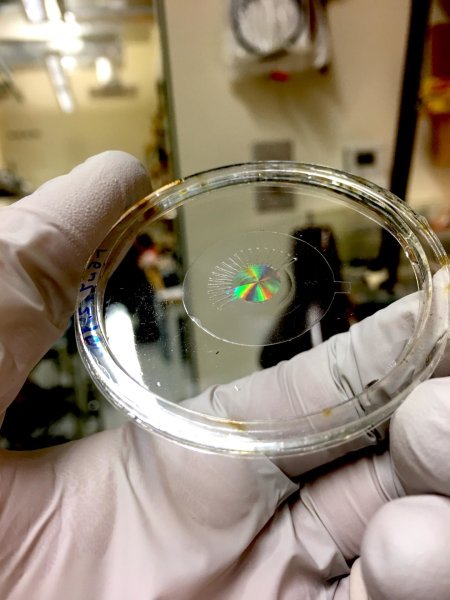US scientists create lens for eventual artificial eye
The scientists have created an artificial eye — no, not the sensor part, which could have delivered an image directly to your brain (this is still in its early stages) — but rather, a lens part of human eye. Or at least something that resembles it quite closely.
According to the Harvard Gazette, a team of scientists from John A. Paulson School of Engineering and Applied Sciences at Harvard University developed a large-scale metalens, combined with an artificial muscle.
 |
| Artificial Eye Automatically Stretches. Photo: SD |
A metalens is a lens made of metamaterial — a nano-material, engineered so that its structure features have size less of given class of electromagnetic radiation wavelength. Materials of this kind display special electromagnetic features; what makes them special is that it is their structure that defines their electromagnetic features, not chemical composition as in the usual materials.
The problem with metalenses is that they are really small, like the size of a single piece of glitter, according to RDMag.com. In order to create the artificial eye lens, the scientists had to first solve the problem of scaling the metalens up — and that turned out to be quite a problem!
The scientists had to actually shrink file size to make it compatible with the system used to fabricate integrated circuits.
 |
After a metalens large enough was produced, the scientists had to bind it with the artificial muscle. The researchers, in collaboration with David Clarke, Extended Tarr Family Professor of Materials at SEAS and a pioneer in the field of engineering applications of dielectric elastomer actuators (also known as artificial muscles) chose a thin, transparent dielectric elastomer with low loss — meaning light travels through the material with little scattering — to attach to the lens. To do so, they needed to develop a platform to transfer and adhere the lens to the soft surface.
"Elastomers are so different in almost every way from semiconductors that the challenge has been how to marry their attributes to create a novel multi-functional device and, especially how to devise a manufacturing route," Clarke says. "As someone who worked on one of the first scanning electron microscopes (SEMs) in the mid 1960's, it is exhilarating to be a part of creating an optical microscope with the capabilities of an SEM, such as real-time aberration control."
An elastomer is a material that stretches when electric voltage is applied. The researches managed to control the artificial muscle so that it can simultaneously focus, control aberrations caused by astigmatisms, as well as perform image shift.
The complete structure is only 30 microns thick and perfectly flat.
According to R&D, the researchers still need to improve their own invention: to reduce the required voltage, and improve the functionality of the lens.











